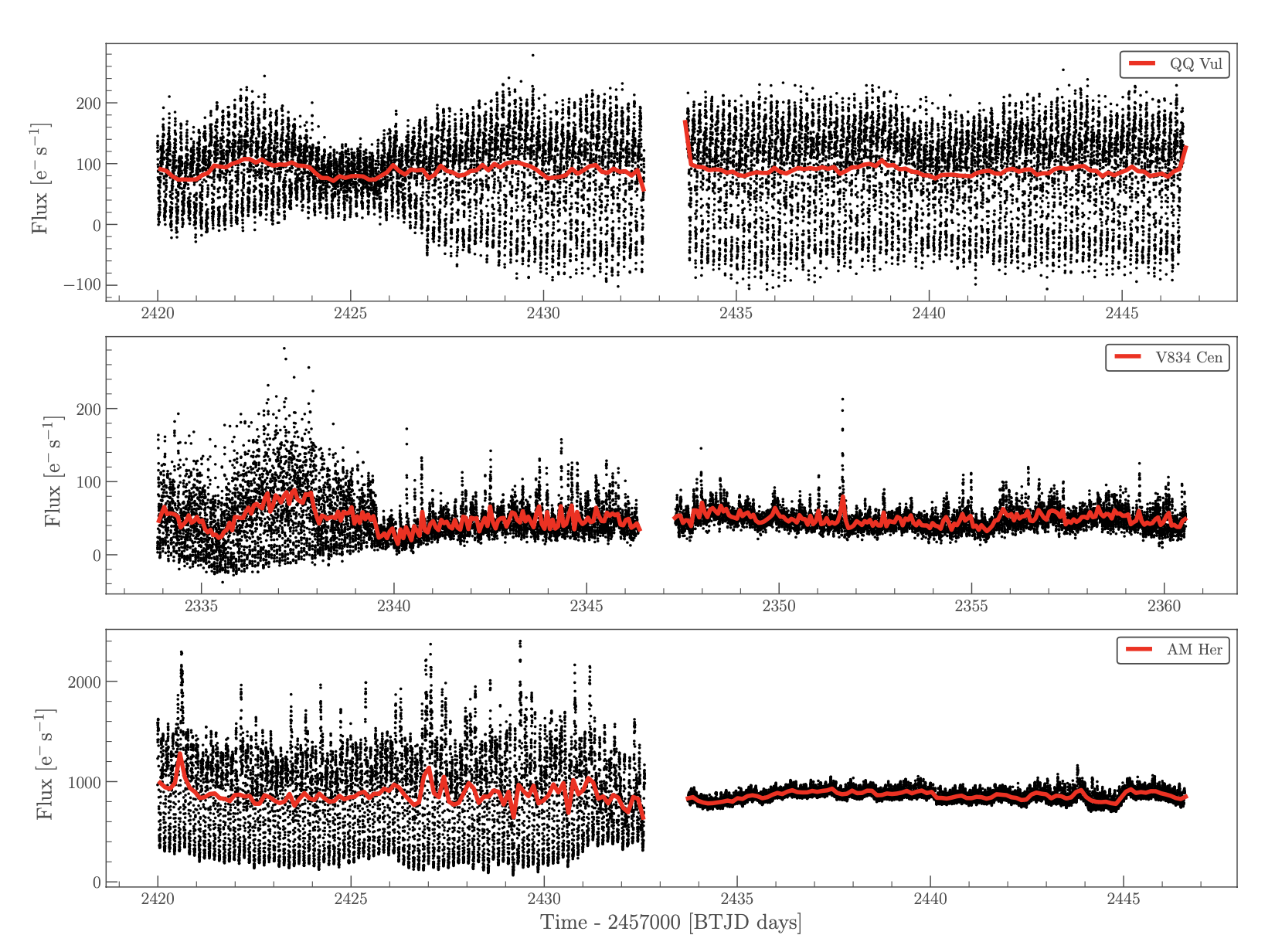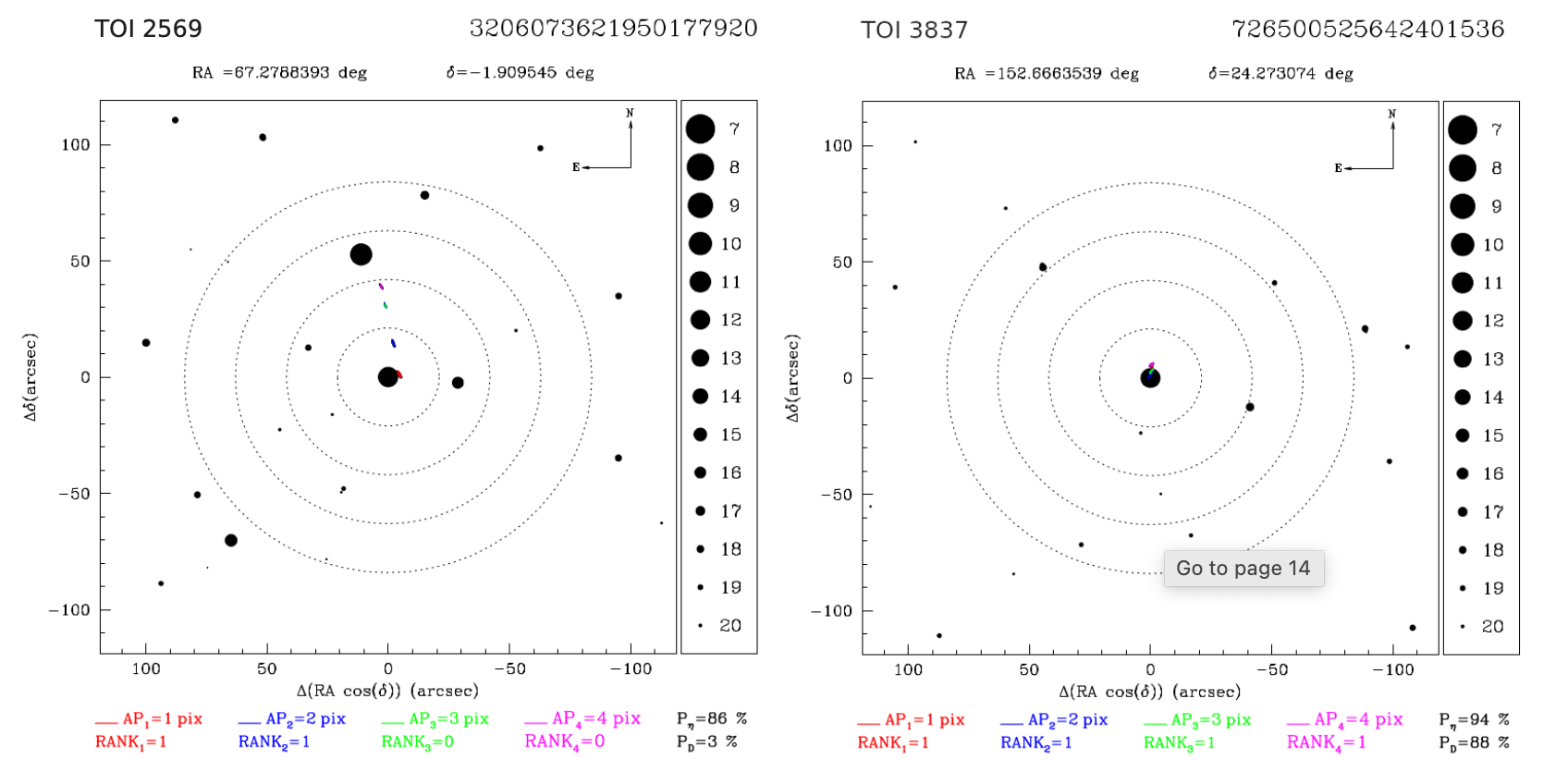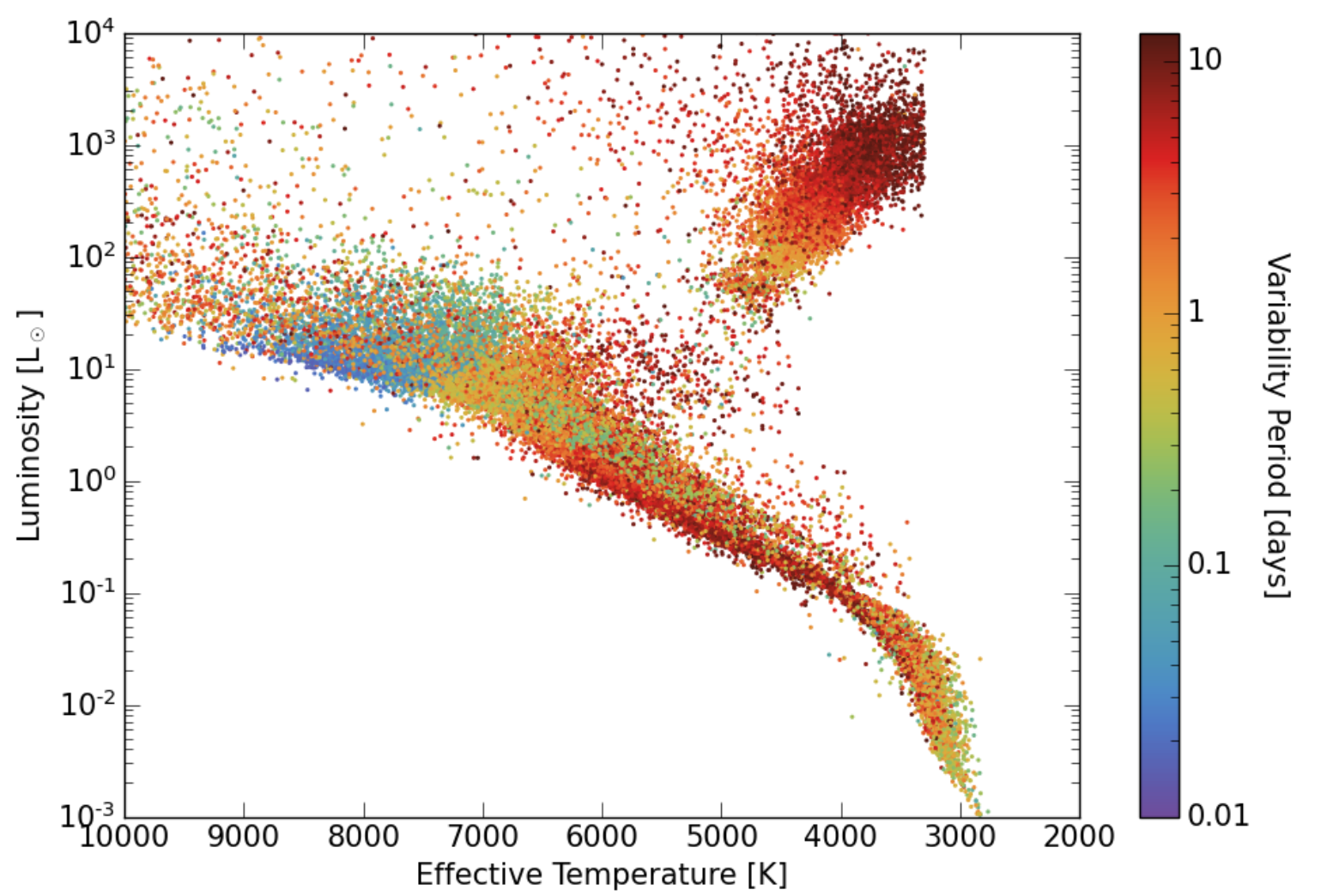Welcome TESS followers to our latest news bulletin! This week, we are looking at three recent papers from the archive. Enjoy!
Short Duration Accretion States of Polars as seen in TESS and ZTF data (Duffy et al., 2022) :
Cataclysmic variables (CV) where the magnetic field of the white dwarf exceeds about 10MG may not form an accretion disk. Instead, the accreted matter falls close to polar regions of the white dwarf, and the system is classified as a Polar CV or AM Her. This paper presents the analysis of short duration accretion states (shorter than about 60 days) of a number of Polars observed by TESS and ZTF. Duffy et al. (2022) study 55 targets with sufficient ZTF-g and ZTF-r data (defined as more than 25 data points) and 9 targets observed by TESS in 2-min cadence, where 3 of the targets overlap between the two datasets. The authors found that short duration states are a common occurrence in Polars, generalized the model of star spot migration, probed the accretion geometry of some of the systems, and refined the orbital period of CW Hyi. Duffy et al. (2022) note that polarimetry, X-ray observations, and more Polars observed by TESS would help advance the understanding of these systems.
Validation of TESS exoplanet candidates orbiting solar analogues in the all-sky PLATO input catalogue (Mantovan et al., 2022) :
False positives due to background eclipsing binary stars are a common feature in searches for transiting exoplanets. Multiple vetting and validation methods have been developed to address this issue, and have been extensively utilized by the community. This paper presents the probabilistic validation of all TESS Objects of Interest (TOI) found around "Solar twins" that are also part of the PLATO input catalog. Mantovan et al. (2022) combine the VESPA package, Gaia EDR3 data, and measurements of the center-of-light during transit to analyze 158 such TOIs. The authors statistically vet 23 of these as bona-fide candidates, five of which have been confirmed to be on-target, and greatly enhanced the on-target probability for another three candidates. Mantovan et al. (2022) argue that the five confirmed candidates are prime targets for high-precision radial velocity measurements and note that they will complete their follow-up observations.
Variability Catalog of Stars Observed During the TESS Prime Mission (Fetherolf et al., 2022) :
Stars vary with time due to internal and/or external processes such as stellar rotation, pulsations, eclipses, etc. The TESS lightcurves provide a prime resource to study these variations across diverse stellar types, environments, and evolutionary stages. This paper presents a detailed analysis of 232,000 stars observed in 2-min cadence and a corresponding stellar catalog of variability on timescales shorter than 13 days. Fetherolf et al. (2022) use Lomb-Scargle periodograms and utilize the auto-correlation Function method to detect about 40,000 astrophysically variable stars with high confidence and about 50,000 with moderate confidence. The authors argue that the period and amplitude of detected photometric variability can be used as stellar classification metrics, and find a relative lack of variability of dwarf stars in the 1.5-2 day range. Fetherolf et al. (2022) note that results from this work would help better understand how stellar variability affects the measured properties of exoplanets and also shed light on the evolution of planetary systems.

Fig. 3: Taken from Duffy et al. (2022). TESS lightcurves of QQ Vul (upper panel), V834 Cen (middle panel), and AM Her (lower panel). The red line represents the data binned on the corresponding orbital period.

Fig. 2: Taken from Mantovan al. (2022). Photocenter analysis of TOI-2569 (left panel) and TOI-3837 (right panel). The red, blue, green, and magenta ellipses represent the position and dispersion of the corresponding photocenter measurements, indicating that TOI-2569 is a false positive while TOI-3837 is in-target with a probability of about 88%.

Fig. 1: Taken from Fetherolf et. al. (2022). Measured period of variability as a function of the effective temperature and luminosity for the stars in their sample exhibiting significant variability.